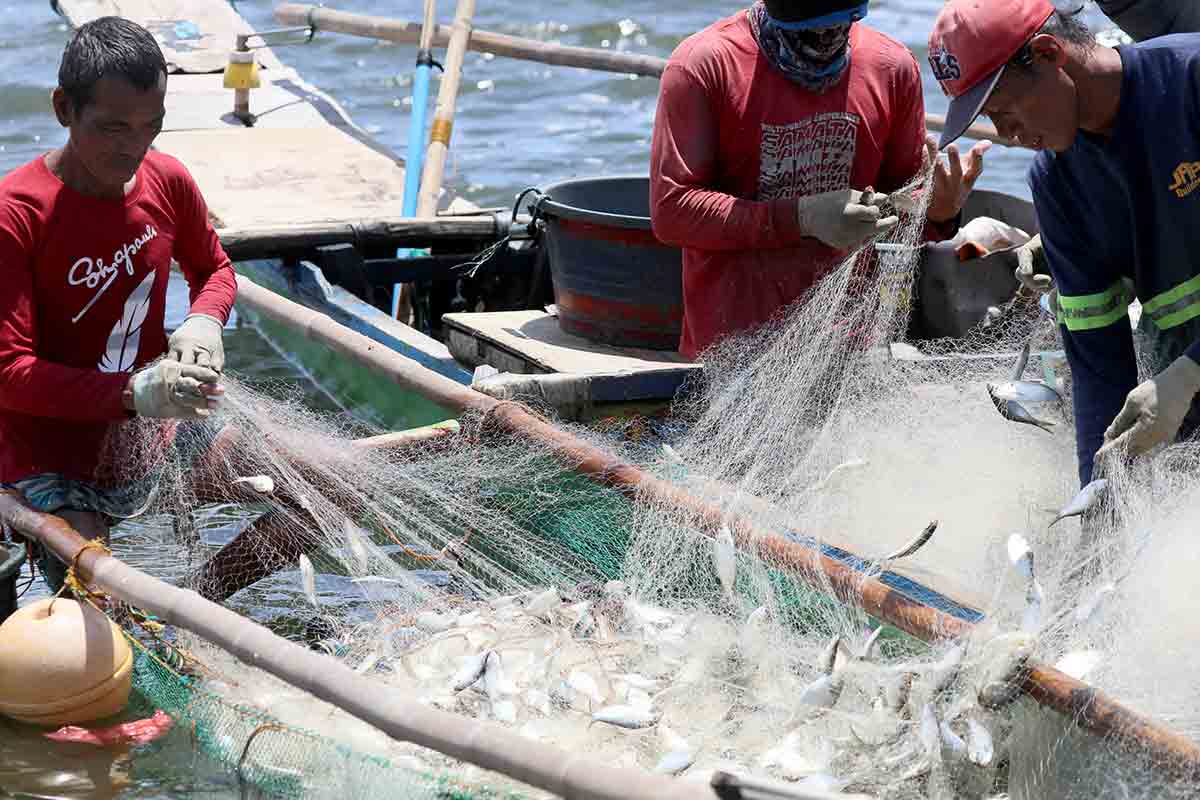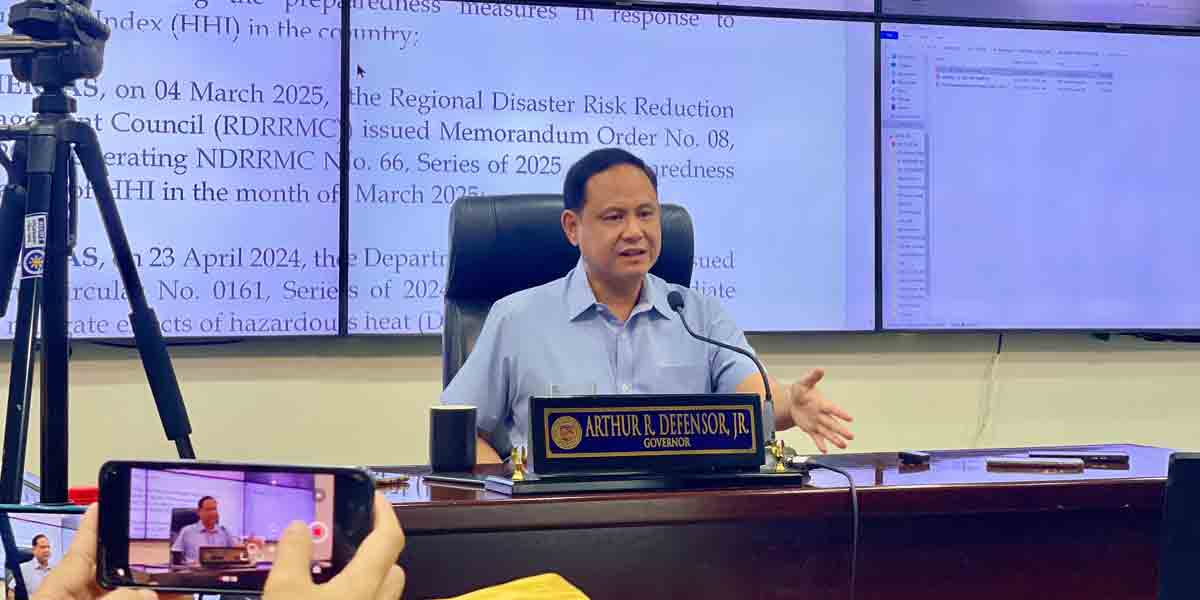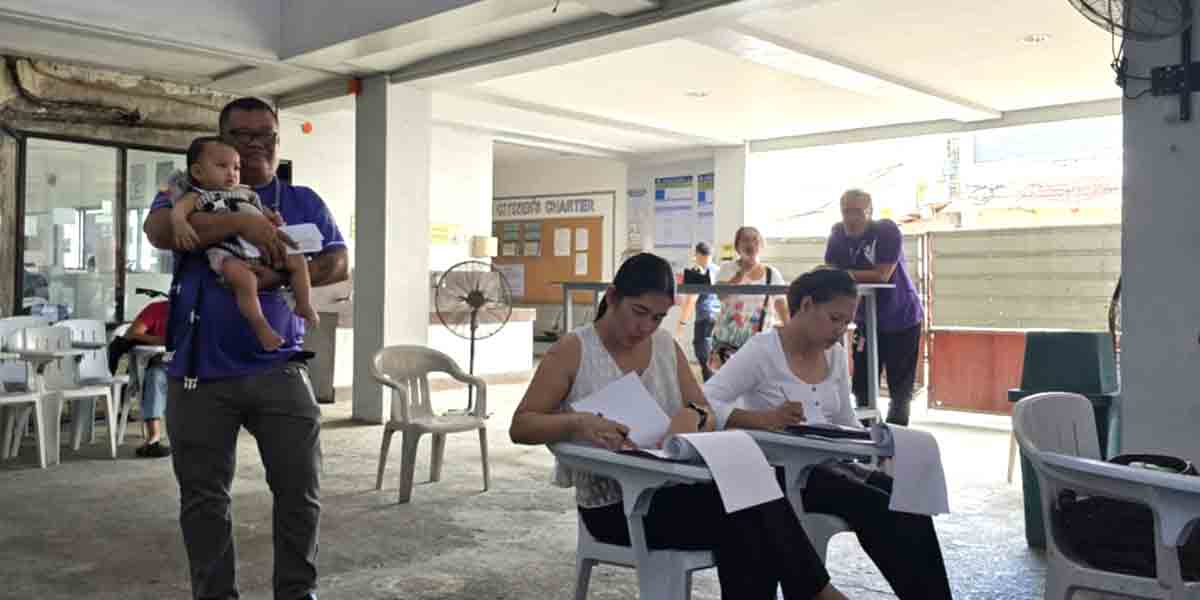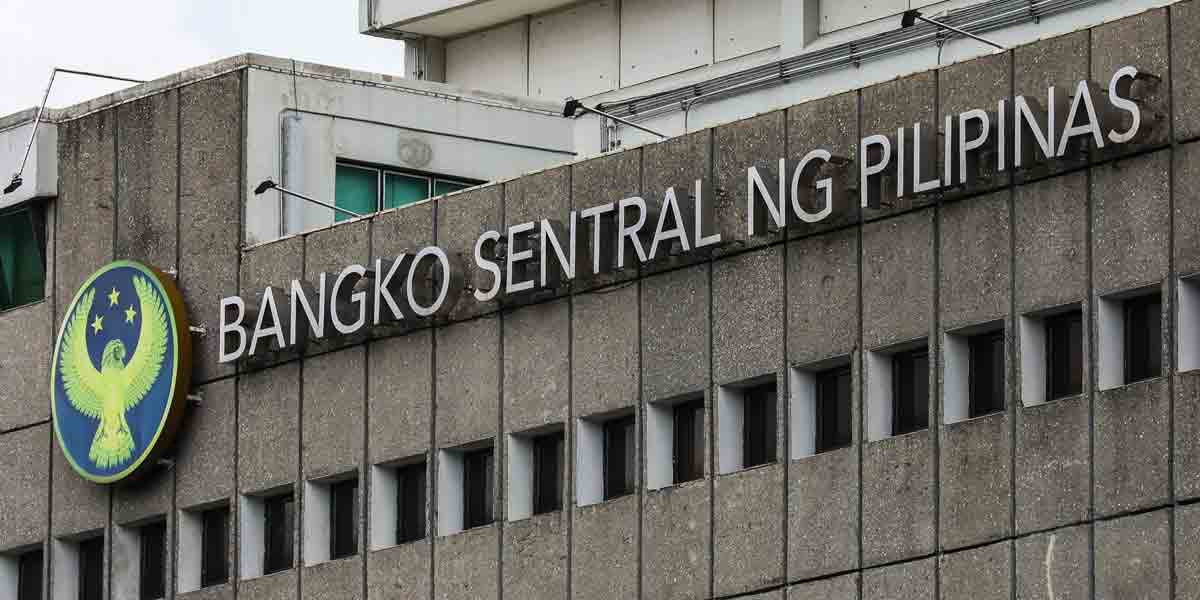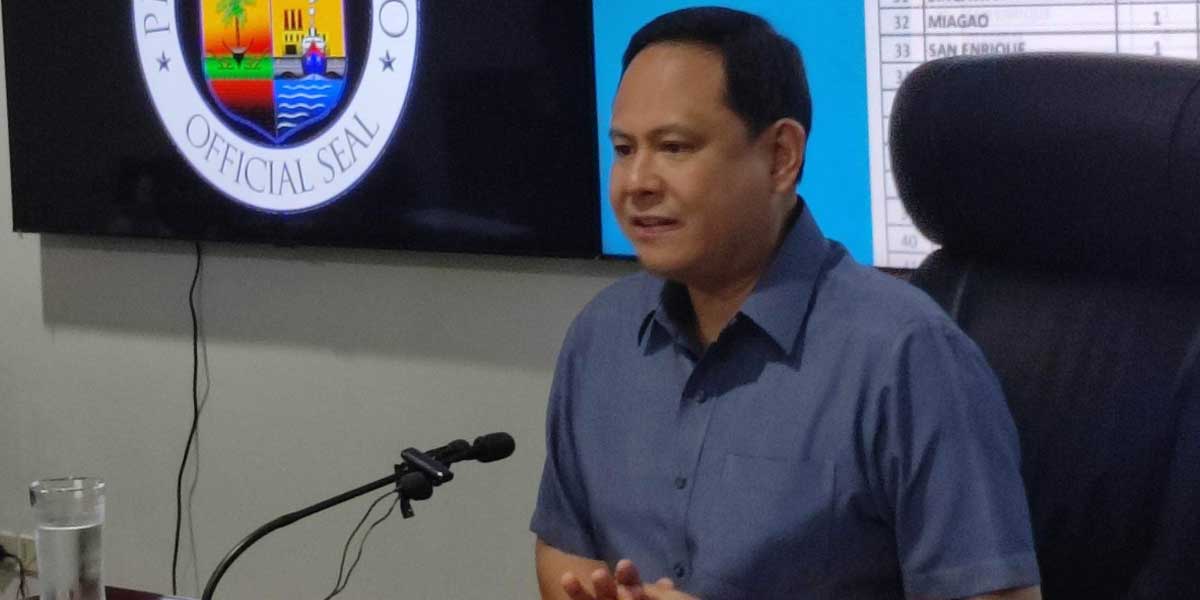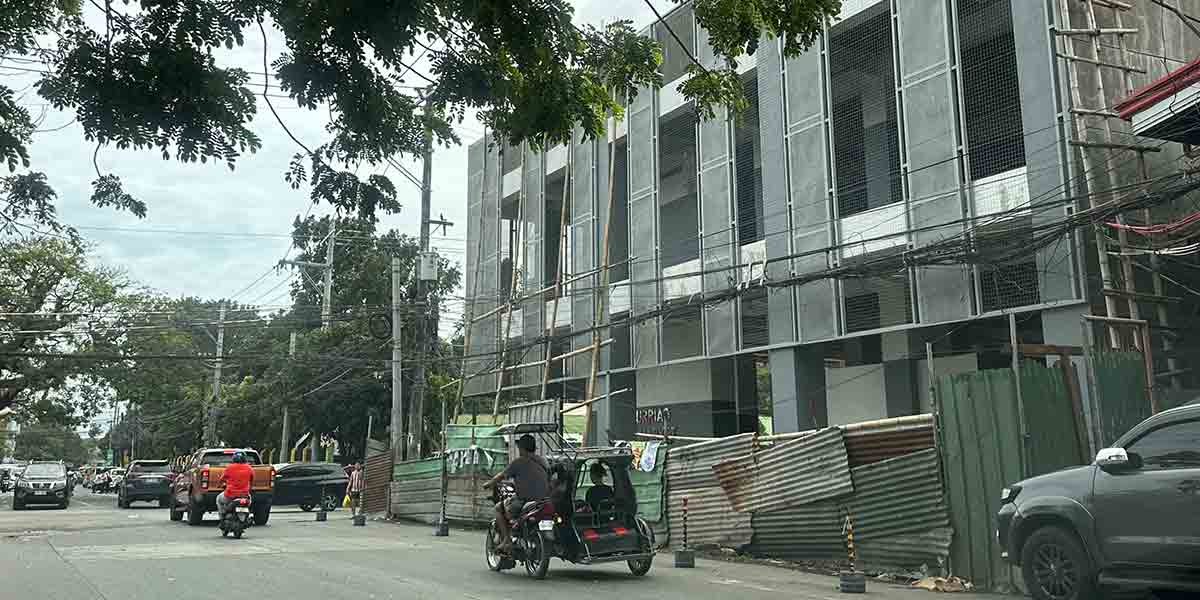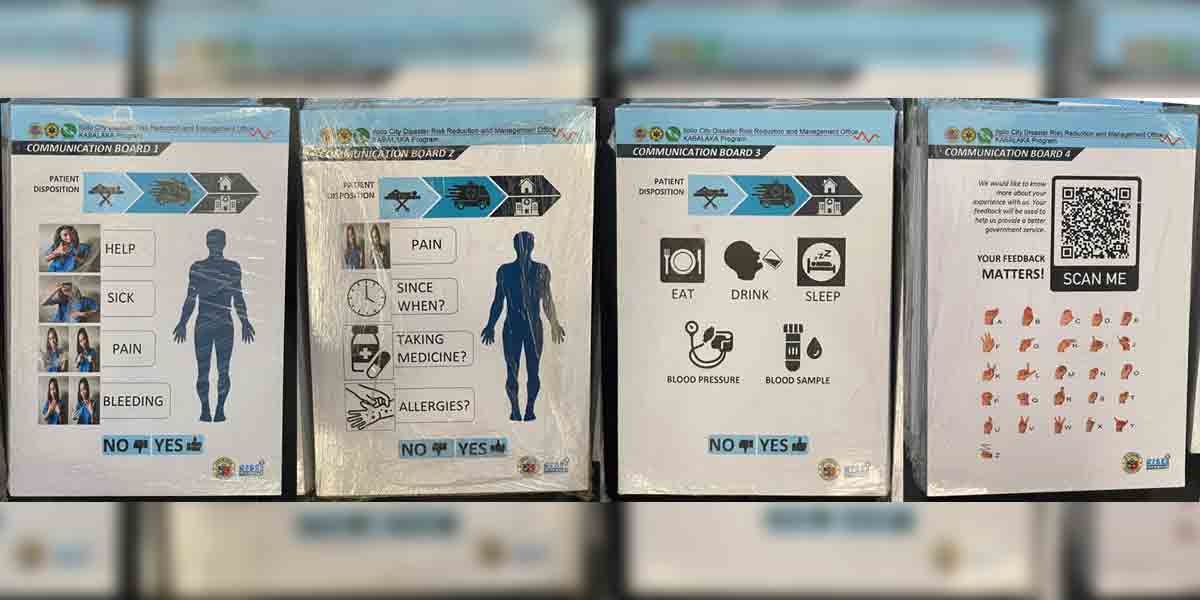
By Francis Allan L. Angelo and Emme Rose Santiagudo
Local government units (LGUs) in Western Visayas that are under the enhanced community quarantine (ECQ) can transition to the more relaxed general community quarantine (GCQ) if they manage to control the rate of infection of the coronavirus disease 2019 (COVID-19).
But public health experts warned that the recent arrival of Overseas Filipino Workers (OFWs) in Western Visayas might lead to another wave of infections if public health measures are not in place.
These are the main points in a policy note written by a group of experts from the University of the Philippines-Visayas and Think Well Philippines.
The policy paper entitled “PUBLIC HEALTH DATA ANALYSIS AND RECOMMENDATIONS FOR COVID-19 IN WESTERN VISAYAS AS OF 30 APRIL 2020” was first posted on UP Visayas’s website on May 7, 2020. The data used in the paper was culled from various official sources as of April 30, 2020.
The authors of the paper were Drs. Helena Marie Lagon Alvior and Philip Ian Padilla and registered medical technologists Mary Camille Samson and Joseph Arbizo.
The paper noted that COVID-19 infection is controlled and gradually declining based on the overall transmission rates data.
While it was noted that local transmission is present in Western Visayas and community transmission is increasing, local incidence and daily incidence rates are low.
“The incidence for COVID-19 in the different provinces and HUCs of Western Visayas has a range of 0.16 (Negros Occidental) to 2.23 (Antique). Guimaras Province has been excluded already in the data set due to its zero incidence. The daily transmission rates are also notably very low,” the paper reads.
The paper also noted the reproductive number or R naught (Rₒ) in the region which indicates how contagious an infectious disease is. An Rₒ that is higher than 1 indicates more number of infections. Less than 1 means less number of infections and indicated that the epidemic is now declining.
“Rₒ for the whole of WV is little less than 1 signifying the epidemic is in a decline overall in the region. Negros Occidental has the slowest viral transmission rate with Iloilo Province and City, and Antique closer to the WV Rₒ.”
For Western Visayas, the reproductive number based on maximum likelihood estimation is 0.991. Aklan is at 0.831; Antique (0.931); Capiz (0.801); Iloilo (0.951); Iloilo City (0.921); Negros Occidental (0.751); and Bacolod City (0.891).
The force of infection (FₒI) or the infection among susceptible populations in the region also looks promising based on data from the Department of Health.
“WV FₒI values over time had two peaks (in the middle of March and April). Aklan had the most promising pattern with zero transmissions after April 1 indicating good infection control (applicable for confirmed cases only). Capiz had the second most promising pattern with the highest peak occurring during the third week of April. The rest of the LGUs also exhibited favorable patterns with declining FₒI values at the end of April. The declining rates are also reflected for the whole of Western Visayas.”
Projected epidemic rates for Western Visayas will depend on stricter measures for Antique, Iloilo province, and Iloilo City, they added.
“Daily projections based on unchanged reproductive number for the region might hinge on cases from Antique and Iloilo City and to a lesser extent, Iloilo province, Aklan, Capiz, and Negros Occidental projections indiscate zero cases for May based on current measures,” they said.
TESTING AND TRACING
Among the recommendations of the paper is to strengthen disease surveillance and contact tracing.
The paper noted that “asymptomatic (no signs and symptoms of the infection) cases are detected by active contact tracing and testing.”
“Comprising 41% of the COVID-19 cases in the region (as of April 30) are asymptomatic and most were tested because they are close contacts of index cases.”
Based on the latest Department of Health (DOH) data, around 56.5 percent of the 93 cases in the region are asymptomatic.
The study indicated that the detect/trace-test-isolate/treat pathway is indicative of the health system and public health capacity of an area.
“Only 23 of 66 confirmed cases (35%) in the region have data on number of contacts traced. More than half of confirmed cases in the region have either no published data on contact tracing (39%) or still in initiated/ongoing status (26%).”
For the 66 confirmed cases (as of April 30), the total number of contacts traced is 840, the paper noted.
Also, almost 71% of traced contacts identified in the region have no data published on their testing status.
“The province of Iloilo and Iloilo City continue to have no published data on the contact tracing and testing status of their confirmed cases. On the other hand, Bacolod City has started to share data for transparency on their efforts. The rest of the provinces have testing results but are not disaggregated to the cases.”
The policy note also called for the adoption of an aggressive approach to testing by building up the capacity of the subnational laboratory (SNL) at the Western Visayas Medical Center (WVMC) in Iloilo City.
“Multisectoral collaboration is evident in helping to build the capacity of the WVMC SNL. There is a need to look into the turn-around time delays, find bottlenecks, and work together to address them. An additional SNL in the region can ramp up the testing capacity and can serve as back up,” it said.
The WVMC SNL, which was designated to test specimen from Region 4B and Region 6 as per DOH Memorandum 2020-0188, started testing on March 26 using the Reverse Transcription-Polymerase Chain Reaction (RTC-PCR) method, which is considered the gold standard in COVID-19 testing.
But the paper said the turnaround time of RT-PCR test ranges from a minimum of two days to a maximum of 13 days.
From March 27 to April 11, test results are announced within 2-7 days, with 4 days being the most frequent count. After the Holy Week, turn-around time for the results ranged from 3-13 days, with a mode of 6 days. Factors of delay are multi-faceted (i.e. supplies shortage, personnel/machine fatigue, invalid results) and further discussions with the SNL team may shed light on the bottlenecks that need to be addressed,” the paper read.
As of May 8, 2020, the WVMC SNL has run a total of 6,002 tests. Dr. Stephanie Abello, chief pathologist of WVMC, said they can process up to 500 specimens daily with results released within 24 to 48 hours.
The laboratory now aims to increase its testing capacity to 1,000 per day by acquiring another RNA extraction machine.
FACILITIES
The policy note also recommended a review of the list of quarantine facilities and to determine realistic capacity such as human resource and supply complement.
The study said Western Visayas has 316 identified quarantine facilities with a total of 5,899 beds to accommodate COVID-19 related cases.
“This statistic is inclusive of facilities intended for use by the repatriated Overseas Filipino Workers (OFWs). Most of the municipalities have identified at least 1 quarantine facility. However, considering the number of positive and COVID-related cases in the region, these facilities are not fully utilized since most probable, suspect, and asymptomatic cases are placed under home quarantine. The 41.73% bed occupancy rate of in Negros Occidental is the highest in the region but still low compared to the number of available beds. The underutilization of these facilities can strain healthcare resources.”
LGUs must also build the capacity of the treatment facilities/hospitals, especially at the district/provincial levels.
The policy paper noted that the region has 37 COVID-19 treatment facilities where 21 (57%) facilities are government-owned and the other 16 (43%) are private facilities.
“Fifteen of these government facilities are classified as level 1 facilities while 3 other facilities are categorized as Level 2. Private facilities also account for the 10 other Level 2 facilities while all Level 3 facilities (3 government, 6 private) are in Bacolod City and Iloilo City.”
Out of 744 beds in identified treatment facilities, only 21% is occupied indicating that most COVID-related cases are mild.
“Strict monitoring appropriate management of these mild cases should be done to prevent further infection. There are 84 mechanical ventilators for exclusive use of COVID-19 patients, 60% of which are available in private hospitals. Ventilators in Level 3 government facilities are available in Corazon Locsin Montelibano Memorial Hospital (CLMMH) and Western Visayas Medical Center (WVMC) located in Bacolod City and Iloilo City, respectively. In Western Visayas, WVMC has been identified as the main treatment center for COVID-19 patients.”
TRANSITION and OFWs
While overall transmission rates data indicate that COVID-19 infection is controlled and gradually declining, the paper cautioned that the recent arrival of OFWs, some of whom tested positive for the virus, might lead to another wave of new infections if public health measures are not in place.
But if the downtrend continues, the experts said Western Visayas LGUs might already transition from ECQ to GCQ with stricter measures for LGU hotspots and for high urbanized cities (HUCs) with influx of OFWs.
The paper recommended a table of classification for each province and HUC based on their pandemic phase and risk level.
Guimaras, which remains COVID-free, is considered low risk, thus it can prepare for the next phase of easing up restrictions.
Aklan, Capiz, Negros Occidental, and Bacolod City have decelerating (slowing down) pandemic phases with moderate risk levels. The recommended strategy is continuous reduction of infections.
The focus of intervention per province are:
-Aklan: Kalibo, Libacao, Malay
-Capiz: Jamindan, Mambusao, and Roxas City
-Negros Occidental: Candoni, La Castellana, and Silay City
Antique, Iloilo City and Iloilo province are still in the Acceleration-Deceleration pandemic phase with high to moderate risks. The suggested strategy is suppression to continuous reduction of infections.
The said LGUs must focus their interventions on the following areas:
-Antique: Sebaste, Pandan, Caluya shal remain under ECQ;
-Iloilo province: Barotac Nuevo, Guimbal, Lambunao, Pavia, Tigbauan, Miagao, and Zarraga;
-Iloilo City: Mandurriao, LaPaz, Jaro, and Arevalo districts.
Overall, Western Visayas remains under the Acceleration-Deceleration phase with high to moderate risk level. The region should keep an eye on the provinces of Antique and Iloilo and Iloilo City.
As OFWs and other stranded residents return to their respective provinces and cities, the paper cautioned that coordination and collective effort remains the key factor in keeping COVID-19 infections at bay.
“It is emphasized that the assumption here is the continuing trend of Rₒ (Reproductive number) reduction and other factors remaining constant. In-migration movements especially in Panay Island, including returning OFWs, and other residents (students, other workers from other regions) is a major factor and therefore, more strategies to mitigate this should be in place. There needs to be better coordination among the different WV LGUs, regional department agencies, and the National Government,” the paper noted.
The ECQ in Bacolod City, Iloilo City, and Iloilo province was extended until May 15, 2020 while other provinces (Aklan, Antique, Guimaras, Capiz, Negros Occidental) shifted to GCQ following the recommendation of the National Interagency Task Force (IATF).
The IATF finalized on Monday the recommendation for the possible lifting or extension of ECQ in the high-risk areas although it has yet to announce its decision.
As of May 11, the Department of Health-Center for Health Development Western Visayas (DOH-CHD 6) has recorded a total of 97 Covid-19 cases in the region with 38 recoveries and 10 deaths. The cases include 27 repatriated OFWs.
Iloilo province recorded the highest number of Covid-19 cases at 18 followed by Iloilo City at 16; Antique (14); Bacolod City (9); Aklan (6); Capiz (5); and Negros Occidental (2).

